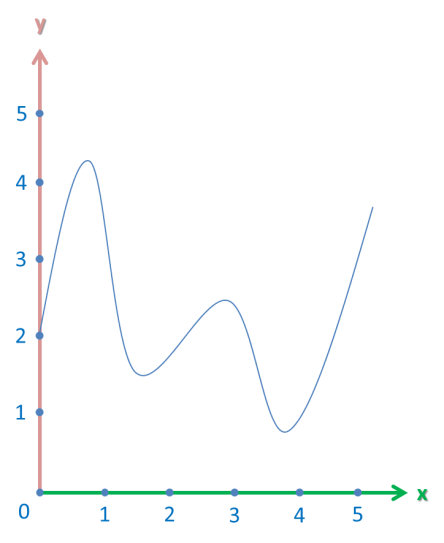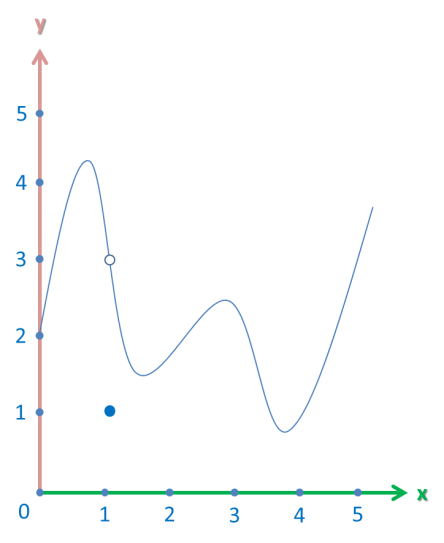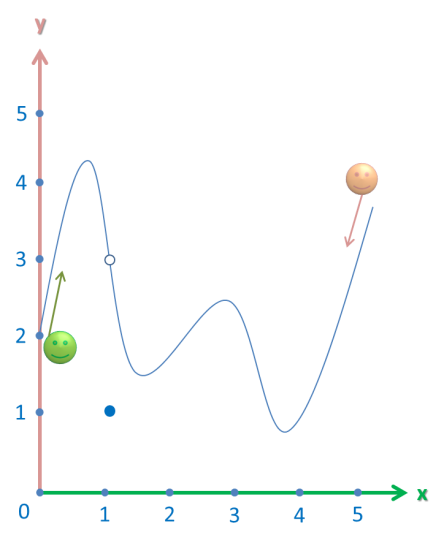Welcome back! If you’ve read my last post Limits Demystified (Part 1) I hope you realized that calculus isn’t that scary. In fact, according to my personal experience, limits are in fact easier to comprehend than many Algebra 1 topics. Absurd but realistic.
Limits Tending to Infinity
Okay, maybe the mere word infinity turns you off. Well, think of it this way. When you move along the real number line starting from the origin and go right, you pass the numbers 1, 2, 3, 4… If you pass further, you will encounter bigger numbers: a thousand, a million, a billion… Well, what if you went all the way forever? That’s infinity.
So, let’s take a look at the following graph:
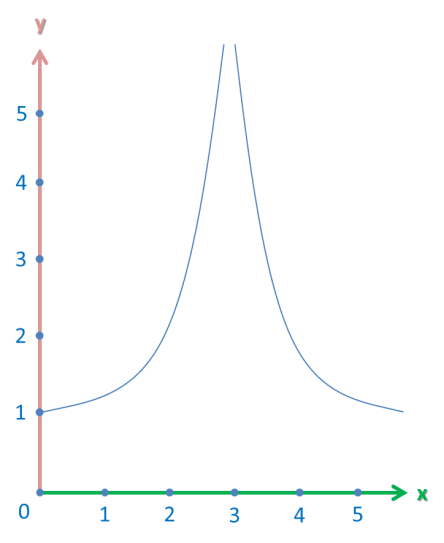
We want to find the limit of this graph as x approaches 3 from both sides.
Now, you probably remember what we do when we encounter limits – we imagine two people and a roller coaster ride:
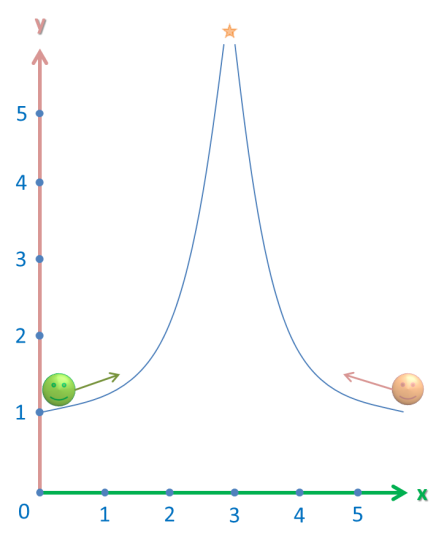
However, this graph has a vertical asymptote at the point x = 3. This is just a fancy line for a vertical line that the graph approaches, but never actually reaches.
That means that both people will never reach the meeting point, since I just said that the graph never actually reaches it. So, what is the limit at that point?
Let’s imagine that the meeting point is a point – infinity. So both people are heading toward that point, albeit forever. That means that the graph tends to infinity at that point, or:
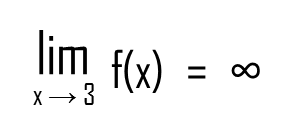
However, this is only one school of thought. Other mathematicians have decided that since infinity is not a defined point, the graph doesn’t even have a limit there. It’s up to you to decide, but now you know that the above situation is rather equivocal. However, both representations are correct – the limit-to-infinity representation and the limit-is-undefined one.
And, to close off the discussion on limits, one final graph:
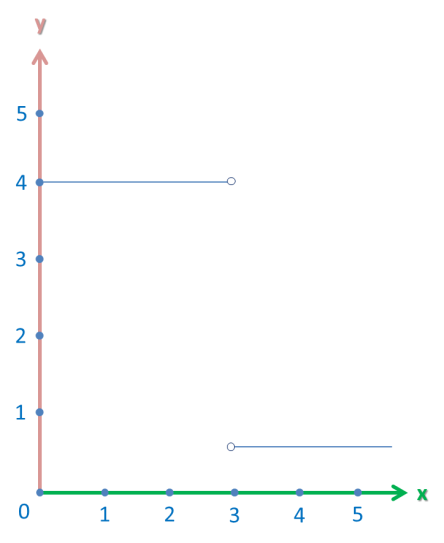
This graph isn’t defined at the point x = 3. What is the limit of the function as it approaches 3 from the left; from the right; from both sides?
Now this question is a bit more complicated than our previous graph. However, our faithful friends come to our assitance:
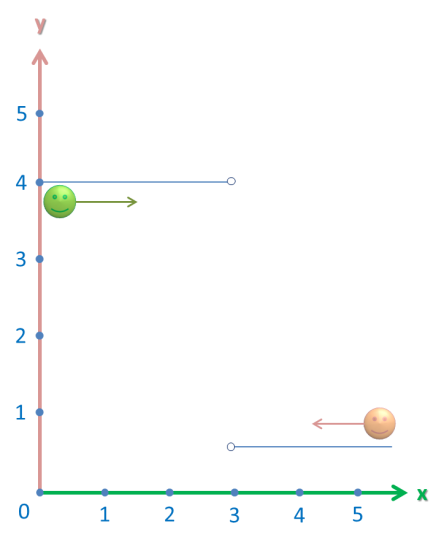
When the person in green (on the left) reaches the meeting point, he says that it’s located at the y-coordinate of 4.
However, the person on the right reaches the meeting point and disagrees. “It’s located at y-coordinate of 1″, he says.
Who’s right? Well, both of them. The limit from the left and the right are different, however, they are limits. (Again, it doesn’t matter if the function is defined there or not. It’s just how the function looks).
Let’s write it in mathematical language:

The minus sign on top of the lim simply means that x is approaching 3 from the left.
And from the right:

I guess you got the meaning of the plus sign. Here, x approaches 3 from the right.
However, the two limits are different. Which do we choose for the from-both-sides limit?

Well, it’s simple. No calculations, no advanced techniques. If the two limits aren’t equal, the function doesn’t have a from-both-sides limit. It’s undefined.

So, we’ve analyzed our fourth function and with this, I conclude this chapter on limits.
Any questions / tips / suggestions are welcome in the comments, as usual.
Until then,
Vladimirr Petrunko
